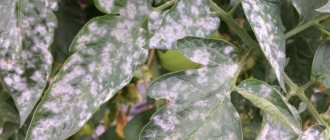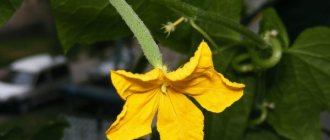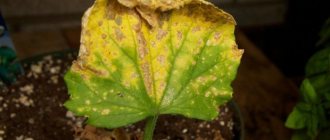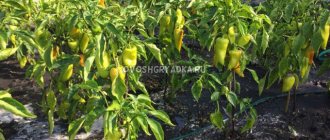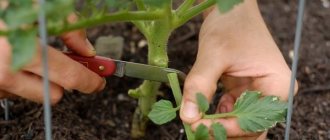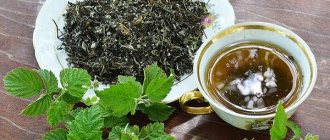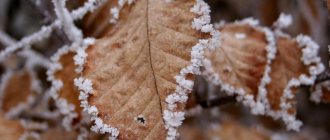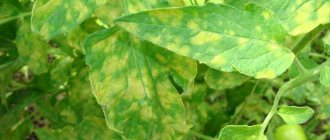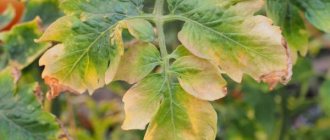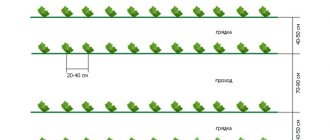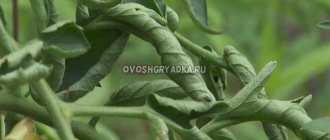The causative agent of the disease
Ascomycetes - who is it? How dangerous are they for plants?
Translated from Greek - simply “bag”, “bag”. Marsupial mushroom. An imperfect organism (mycelium), which has a vegetative body in the form of thin threads (hyphae) and special organs for bearing spores (reproduction cells) - bags. The reproduction of ascomycetes itself is carried out asexually (without reproductive cells) and sexually (through the interaction of specialized cells).
80% of plant diseases are associated with spore organisms. The causes of fungal diseases are not always the same, and the fight against them is protracted.
The essence of a plant being damaged by a fungus is its penetration through the stomata of the leaf surface or damage left by pests, and intensive germination into the body of the plant.
Rapidly spreading, the mycelium creates at its ends - due to the fusion of male and female gametes - more than 100 bags (each with 8 reproductive spores). On the surface of the leaf, the bags, closing, form “saucers” with a diameter of up to 400 microns.
Thin threads (hyphae) of the fungus intertwine to form bundles and new fruiting organs. The main purpose of multi-meter threads is to absorb water and nutrients from the plant. The period of ripening of spores in bags at a temperature of 20 degrees Celsius is 2-3 weeks. They are transferred by streams of water or air to other plants, combining for a new act of fertilization.
Asexual (vegetative) reproduction is typical for marsupial fungi under optimally favorable weather conditions. Then, on the surface of the mycelium, conidia grow from ordinary spores (separated from hyphae) - immobile spores, ready to turn into a new organism with the functions of reproduction and settlement.
Reference: In the world of fungi, ascomycetes number more than 30,000 species. Their role in nature is not clear: they maintain the completion of the biological cycles of nitrogen and carbon, are the basis of lichens, and are included in the menu of invertebrates, rodents and even larger animals - wild boars and deer.
Description and photo of grape rubella
Grape rubella as a fungal infection. This disease of grapevines received its name from the color of the thickening spots that appear on the first leaves in May-June. So, why do grape leaves turn red? Sometimes, however, the nature of the spots can be completely different:
- mildew infection;
- damage to the plant by spotty necrosis (bacteriosis);
- spider mite damage;
- the presence of fluorine when fertilizing with boron superphosphate;
- noticeable potassium deficiency;
- heavy overload of bushes.
Rubella is characterized by color changes between the veins of the leaf, forming a triangular graphic; the leaves seem to rust. An indisputable confirmation of infection is the specific type of stain:
- in white varieties: grape leaves are covered with brown spots, with a narrow yellowish border, or completely yellow spots;
- colored varieties (pink, red, black) have dark red spots on the leaves of the grapes with a greenish-yellow outline around the edge.
The absence of sporulation on the reverse side of the leaf blade on the 2nd day of the appearance of the spot immediately excludes mildew infection.
Rubella is not an economically significant disease of grapes. It cannot be treated, since the fungus penetrates the vegetative organs of the plant. The parasite has the property of forming a persistent addiction to fungicides (chemicals). The fight against rubella is mainly about preventing the spread and changing the ecology of the environment.
Reference: The disease was first described by the Swiss biologist G. Müller at the beginning of the last century, who identified it in the vineyards of Thurgau (in the northeastern canton of Switzerland).
In the photo below you can get acquainted with the signs and appearance of rubella damage to grapes:
Grape mite
The initial stage of development of the grape mite disease is similar to the symptoms of mildew.
A fluff without bulges helps differentiate mildew from a mite. With a weak mite infestation, only the lower leaves of the grapes deteriorate. In advanced cases, the disease affects the upper greenery. The leaves on the grapes gradually turn pink or red. Treatment with the following drugs helps protect the nursery from grape mites:
- Aktara.
- Bi-58.
- Karate Zeon.
- Vermitek.
Types of disease
Fruit growing specialists distinguish the nature of this disease, classifying it as:
- infectious;
- non-infectious.
In the first case, the vine during the first 3-4 years of life is affected by the transfer of spores from neighboring plants, including weeds and litter. In the second, the cause of the disease is:
- soil composition (rocky, poor in nutrients, in particular potassium);
- disturbances in the water balance in plant nutrition;
- weakening of the bush;
- prolonged rains;
- drought;
- low night temperatures.
Non-infectious rubella can be easily overcome by changing the entire agricultural background for the better or changing the feeding system.
Help: Systemic control of mildew can weaken the process of ascomycete infection.
What to do if you suspect bush infection
It is very difficult to pinpoint the cause of red leaves. Tests for viruses (leaf curl virus, red spot virus, etc.) are expensive, so the first recommendation in the identification flowchart is to test the conduction system for integrity and then perform a leaf petiole test (Figure 11). If bole disease and any other damage to the conducting system and nutritional deficiencies are excluded, then samples should be sent for virus testing.
Figure 11: Flowchart of actions to take after you notice red leaves in your vineyard.
*—A county agent is a local official of the USDA Cooperative Extension Service. The agent’s functions include both organizing assistance to farmers at the expense of federal, state and local funds, including university funds, and introducing scientific methods of farming (translator’s note).
Sources:
https://ofermerah.com/krasnye-listya-u-vinograda.html https://lozaved.ru/bolezni-i-vrediteli/pochemu-krasneyut-listya-u-vinograda.html https://vinograd.info/ stati/vinogradarstvo/prichiny-pokrasneniya-listev-na-vinogradnike.html
Consequences
The introduction of a protozoan organism into the leaves, or, less commonly, grape clusters, leads to:
- thickening of the leaf plate and manifestation of its fragility: leaves curl and dry, until they are shed;
- changes in the productivity of the leaf as a photosynthetic apparatus;
- weakening of a plant that is not receiving enough nutrition;
- growth disorders;
- the appearance of deformed fruits that do not reach full ripening;
- reduction (up to 80%) or complete elimination of the harvest;
- re-infection at the end of the growing season (September).
Important: Grape blight, if not detected in a timely manner, can completely deprive the bush of leaves at the beginning of the growing season.
Ways to combat the infectious form
What to do if red, yellow or brown spots appear on grape leaves, if the leaves rust? In fruit growing, there are three generally accepted ways to combat fungal diseases:
- chemical (using fungicides);
- biological (fungi do not tolerate competition);
- mechanical (agrotechnical measures).
But the most effective thing is to prevent the possibility of defeat.
- The chemical method of combating plant diseases, at the current level of fungicide production, provides the highest efficiency and financial savings. The main condition: what is toxic to parasites should not be toxic to humans. Otherwise, the means do not justify the goal - the ripening of edible fruits that are beneficial for our body. Preparations for treating plants are:
- contact type, directly affecting the affected surface (“ Rovral ”, “ Omite ”, Bordeaux mixture (8% solution);
systemic type, when the drug is administered to penetrate all plant systems (“ Fundazol ”, “ Quadris ”, “ Strobi ”, “ Topsin-M ”, “ Topaz ”, “ Bayleton ”);
- combined - combining properties of the first and second types (“ Ridom ”, “ Gold ”, “ Carbis Top ”).
- Biological means of combating fungal infections are non-toxic, but they also do not provide the long-lasting, lasting effect that gardeners expect. They are used mainly in the early stages of the disease, combined with traditional methods tested over the years.
Very popular among biological products is the universal “Gaupsin", the effectiveness of which for all types of garden and vegetable plants, including grapes, is 90%. This is with complete safety of the drug for humans and other living organisms: higher animals, fish, bees. The effectiveness of its microflora is productive within 2 weeks, it does not accumulate in the plant, and does not affect the taste of the fruit. Keep " Gaupsin“Can be used in summer at room temperature for 4 months, in a cold place for up to six months.Biological agents also include the recommendation to treat bushes with a solution of wood ash extract and laundry soap (ash to water - 1/10; 50 g of soap). The frequency of treatment is once every 10 days, until the end of the growing season.
- Mechanical means of control include:
In the fight against the causative agent of rubella, anti-mildew drugs work well: copper oxychloride (0.3% solution), polycarbacin, arceride, polychrome. It is no coincidence that where the vine was treated for downy mildew, the fungus does not manifest itself.
Chemical drugs have one disadvantage: pathogens get used to them, and a change in the synthesized substances or an increase in dose is required.
- removal of affected leaves and shoots;
- removal of stepsons;
- chasing previously affected fruit shoots, leaving foliage above the bunches; stepsons in this case - do not delete;
- timely garter of shoots;
- destruction of pruning waste and dry litter;
- removing weeds from the root circle, digging up the soil;
- pruning the bush before winter;
- additional application of potash fertilizers.
Important: “Grapes love not sweat, but sun and earth.” The composition of the soil and the presence of potassium in it are very important for the health of the vine.
Nutrient deficiencies
Figure.1 Potassium deficiency (K), Cabernet Franc variety. Redness of the leaf blade occurs between the veins and remains red between the veins.
Figure 2. Magnesium (Mg) deficiency, Chambourcin variety. Please note that the redness occurs in wedges, starting from the edges of the sheet.
Figure 3. Phosphorus (P) deficiency, Zinfandel variety. Pay attention to the redness from the leaf blade itself and its edges.
Related article: Grape variety Ionel
Potassium (K) deficiency develops when bushes receive less K than they require for normal growth and development, especially if growing soils have a low soil pH (i.e. pH less than 5 for Vitis vinifera L.), which reduces the availability of potassium to the roots grape bush. Potassium is a mobile nutrient, and when it is deficient, the upper (younger) leaves receive K first, so redness begins on the older, lower leaves first. Symptoms of this redness usually appear at the beginning and end of summer. On red-berry grape varieties, the leaves turn red between the veins, starting at the edges, and as K deficiency worsens, the leaves turn purple (Figure 1). On white-berry grape varieties, the leaves begin to chlorose (become pale yellow or white) due to insufficient chlorophyll production. To monitor plant status for K deficiency, it is recommended to analyze leaf petioles every 2-3 years, ideally during flowering. Target petiole K levels should be 1.5% to 2.5% when sampling at flowering and 1.2% to 2.0% when sampling 70 days after flowering. It is recommended to apply potash fertilizer (KOH) using either foliar or root feeding, depending on the urgency of the action being taken. In case of chronic K deficiency, laboratory tests of the soil should be carried out to determine the level of nutrients and pH in it.
Magnesium (Mg) deficiency: Mg-deficient leaves may be similar to K-deficient leaves; however, with Mg deficiency, leaf redness begins at the edge of the leaf blade, creating a wedge-shaped pattern (Figure 2). Because Mg deficiency is a very serious problem in dark-berry grape varieties, internuclear chlorosis may appear red to brown. In white-berry varieties, chlorosis caused by Mg deficiency remains yellowish. The target level of Mg in leaf petioles should be 0.3% to 0.5% at flowering; or from 0.35 to 0.75% - when sampling 70 days after flowering. Mg sulfate (MgSO4) is used to correct Mg deficiency, but its use is only effective if the soil pH does not require adjustment. If your soil is acidic, apply dolomitized limestone (Mg-containing limestone) as it will also raise the soil pH, improving the rate of Mg uptake.
Phosphorus (P) deficiency : P-deficient leaves of red-berry varieties show transient coloration, while white-berry varieties show chlorosis. Typically, initial chlorosis appears around the edges of the leaves, which turn red in red-berry varieties (Figure 3). Unlike other essential nutrients, P provides greater flexibility in terms of timing of application because it is less mobile in the soil and is not easily removed. The target P level for leaf petioles should be between 0.13 and 0.30%. Monoammonium phosphate (NH4H2PO4) and diammonium phosphate ((NH4)2HP04) are common sources of phosphorus fertilizer. Adjust soil pH if it is below optimal to improve P uptake by roots.
Prevention means
There are no specific preventive measures for rubella. This fungus appears earlier than the downy mildew pathogen, but is sensitive to preventative spraying against mildew. Here are a few rules to prevent this disease:
- Both sides of the leaf must be treated with fungicides. In spring, it is better to use organic preparations, as copper can cause burns.
- At the beginning of vegetative growth, it is necessary to exclude contact of the plant with old leaves.
- It is recommended to monitor the lighting and ventilation of the bush.
- After the initial treatment of young shoots and removal of infected leaves, you need to take care of sufficient leafing of the bush, reducing the length of pruning and maintaining healthy stepsons.
- Qualitatively improve soil fertility by introducing organic fertilizers: manure, compost, humus.
- Spray with potassium nitrate (1%) at the beginning or end of daylight hours (up to 5 times with an interval of 10 days), combining it with the application of potassium fertilizers at the root of the plant.
- All grape pests (insects, birds), violating the integrity of the plant, open the “gate” for fungal infection. Prevention of ascomycetes includes protecting the vine from pests.
Learn about other types of grape diseases, types of rot, as well as how to detect and fight oidium, chlorosis, bacteriosis, bacterial canker and anthracnose.
